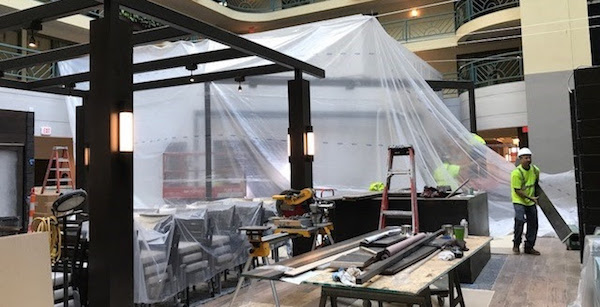
PLAINFIELD, IL, JULY 2, 2019 — The Society of American Value Engineers international defines value engineering as a “function-oriented, systematic, team approach to provide value in a product, system, or service.” In layman’s terms, value engineering has always meant one thing: saving money without compromising quality. True value engineering is not simply a matter of cutting costs, but rather giving careful consideration to all options, always with the project’s goals in mind. A well-planned and well-executed value-engineering process can improve a hotel renovation without sacrificing its essential integrity.
Larry Miles, considered by many to be the father of value engineering, introduced this process nearly 70 years ago. When Miles developed the analytical field of value analysis for General Electric after the Second World War, he identified two elements of the value equation—function and cost—and balanced them against one another. As Miles approached the problem of enhancing value, his objective of value analysis was to identify all elements of function and cost, and to express their mutual interdependency so that an informed decision could be made between the two.
Applying that same thinking to hotel renovation, the value engineering process becomes a systematic approach that engages a team from multi-disciplines, including the owner, architect/engineer, designer, contractor and sometimes an outside consultant, who review the project in an attempt to expose optimum value both short term and long term. Of course, time is also a commodity that must be taken into consideration.
Brainstorming early on in the process will determine what products, systems and processes are used to help eliminate unnecessary cost. In both new construction and renovation, value engineering is too often introduced during the design phase of a project. Doing so does not offer as much of a benefit as it would during the planning stage due to the potential impact of project redesign. Consider this: upfront construction costs account for a mere 11% of the total lifecycle costs of a building. That underscores the fact that early decisions have a critical impact on the long-term cost of ownership. Likewise, when a professional team works together from the beginning of the planning stage of the renovation, the right materials can be specified from the start, thereby avoiding unnecessary change orders and delays in the schedule.
Compromise Cost… Not Quality
The essence of Value Engineering is compromise. For instance, can 2000 pieces of ceramic tile be substituted for marble in the lobby? That depends on several things, such as what is the hotel owner’s expectations? What kind of wear and tear the flooring will be subjected to? How does this tile affect the overall design? While the project programming may show the client wants marble, changing to a ceramic tile that looks like marble and multiplying that savings by 2000 may become worth considering by all parties.
For another example, let’s consider a mid-size hotel under renovation and instead of considering what products are used, lets analyze where they come from. The owner’s chief concern is time; the hotel rooms have been taken off line, so the quicker the renovation is completed the faster they can be profitably turned back over to the hotel. If buying the building products from an overseas vendor, although the cost maybe lower than “Made in America,” you need to consider the time it takes to not only manufacture but to ship the product. It may be advantageous to source the product locally to alleviate the chances of materials not being received on time due either to communication issues or not allowing enough time to produce and ship, or due to problems that sometimes can occur at U.S. Customs that could hold up delivery.
While these types of compromises may be tedious, they eliminate the need to redesign or respecify materials and methods at a much later phase when funds have already been poured into the renovation. As a creative aspect, compromise forced by cost constraints can also be a good tool for setting the parameters on design possibilities. Given the many possible design approaches and the limitations, the value engineering process helps narrow down the possibilities, often forcing a team to be more creative or inventive in its compromises.
Of course, compromise simply for the sake of compromise is pointless. Instead, the goal should always be to ensure a project is performed and delivered using the best value approach that maintains design integrity without compromising quality, yet eliminating products, processes and designs that generally drive up the overall cost. If something doesn’t provide extra long-term value and it can be substituted with an alternative, the hotel owner’s expectations are sure to be exceeded.
Conclusion
While every hotel renovation project is unique, generally speaking value engineering involves a set of core stages that include:
- Identifying the main elements of materials and methods
- Analyzing the functions of these elements
- Researching potential alternative materials and methods to achieve these functions
- Carefully evaluating each alternative to ensure that it is viable and beneficial
- Accurately costing each potential alternative by taking into consideration all factors (e.g. shipping, storage, lifetime maintenance, etc.)
- Evaluating each potential alternative, and highlight those that have the highest chance of being successful substitutes.
A fundamental feature of value engineering, and what makes it so advantageous in a hotel property renovation project, is that it does not seek to alter or diminish the project’s conceptual vision, or make sacrifices with respect to project material and quality, functionality, performance and reliability. On the contrary, value engineering can actually improve aspects by identifying innovative options and new approaches.
For more information visit www.cicerosdev.com.


